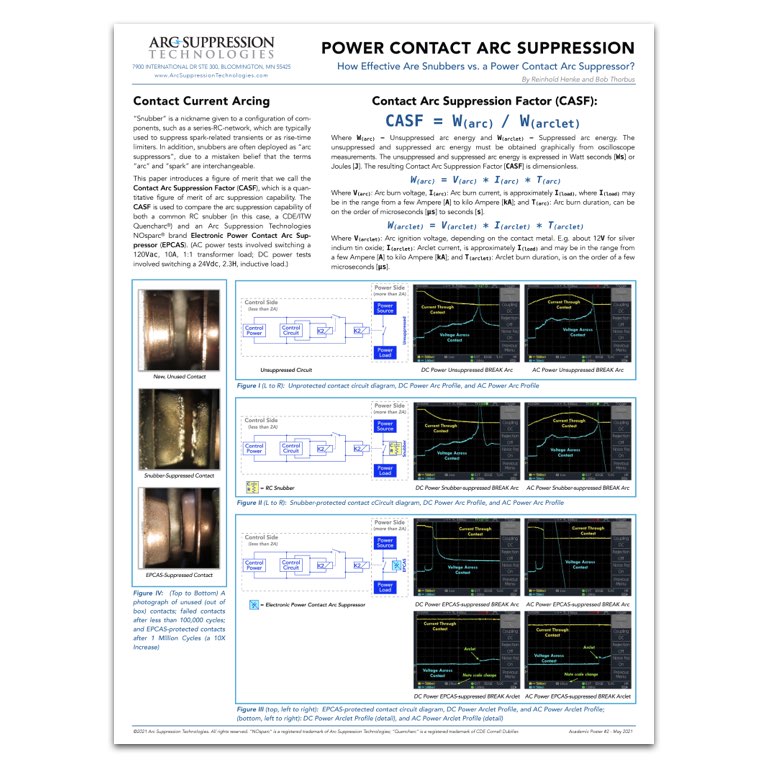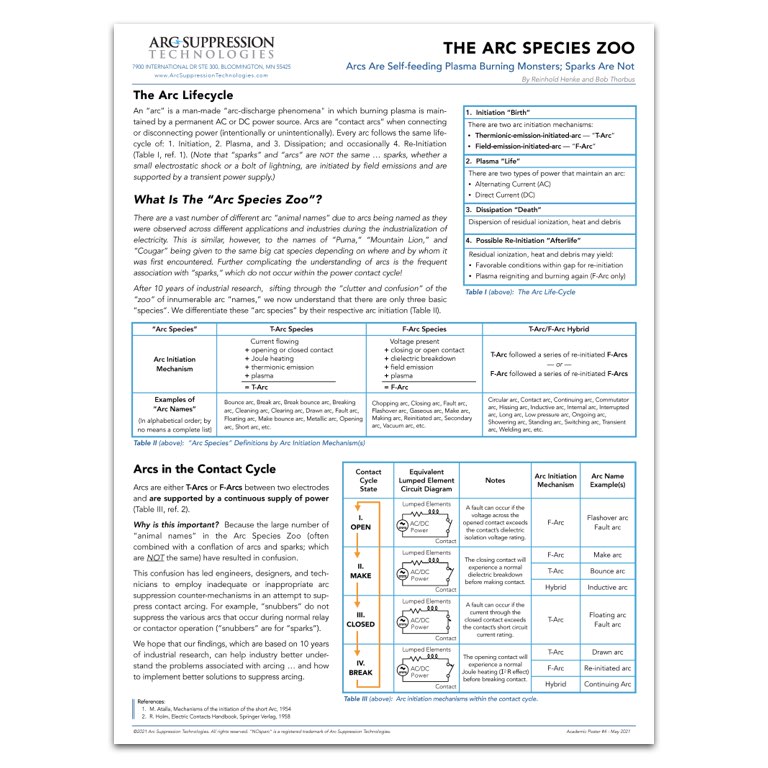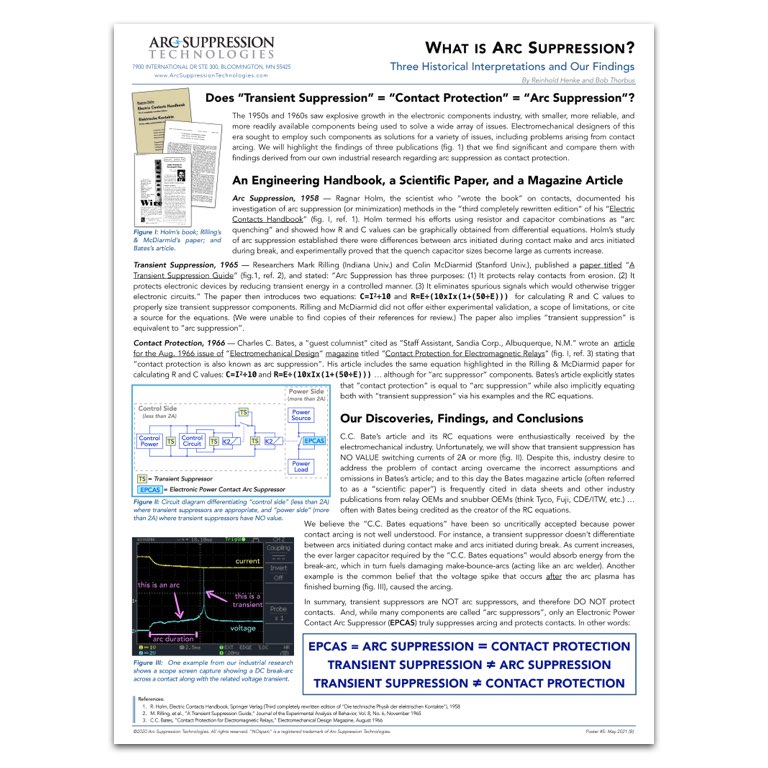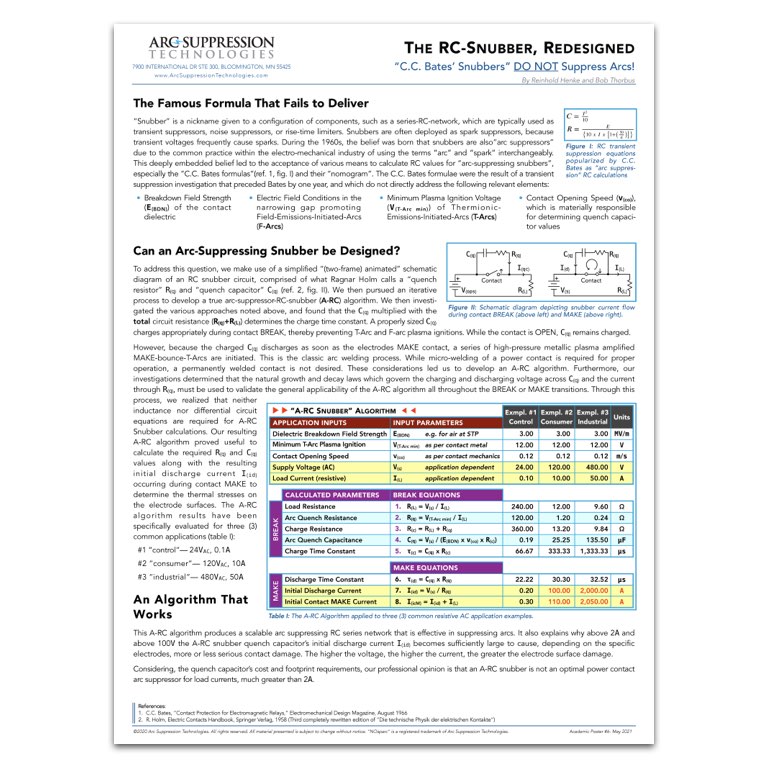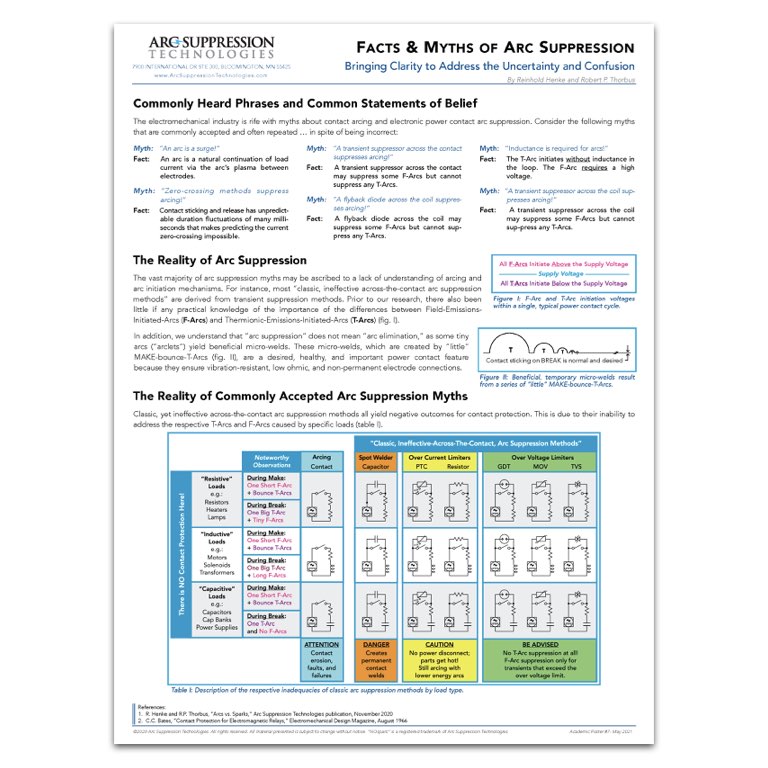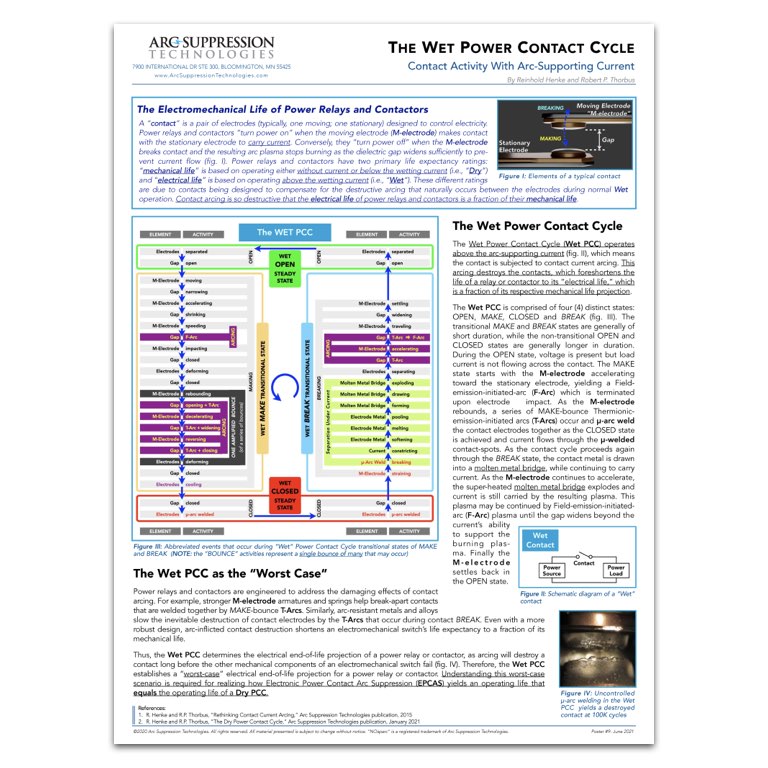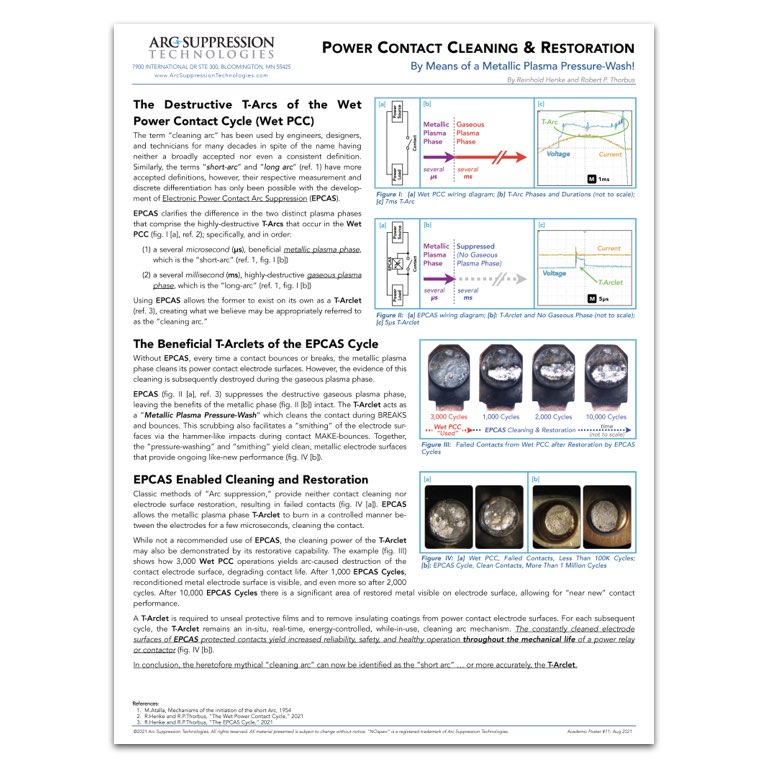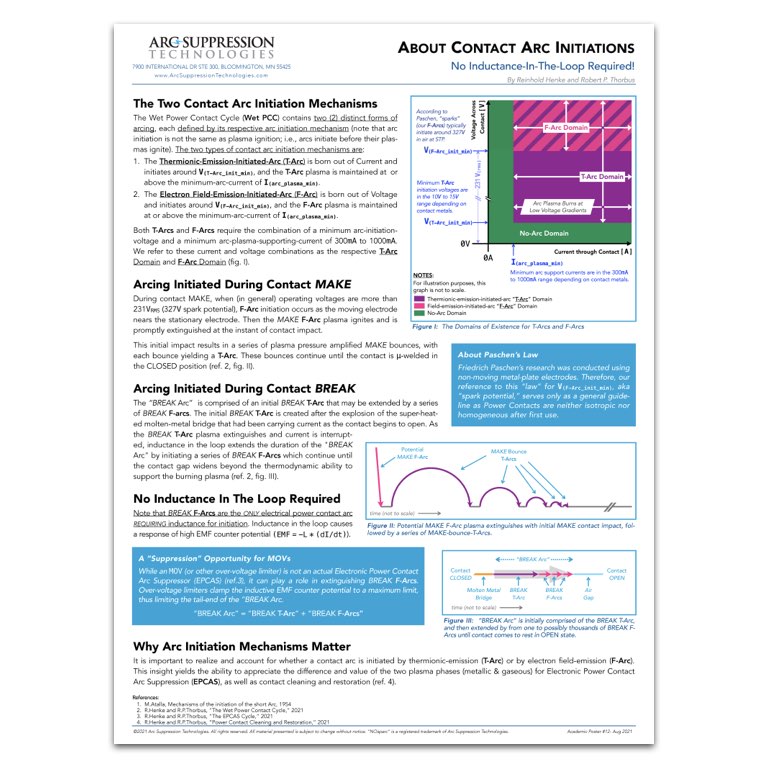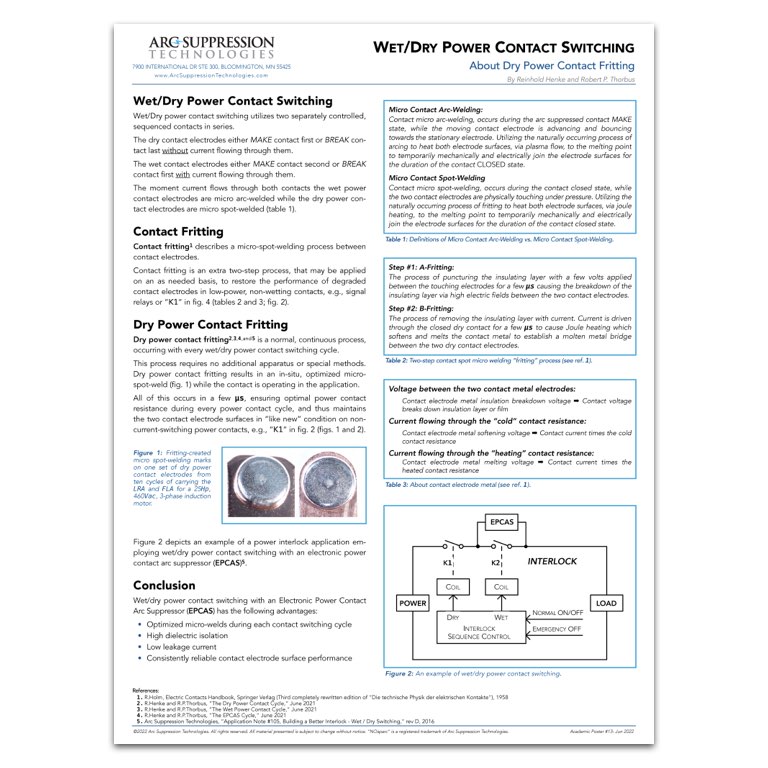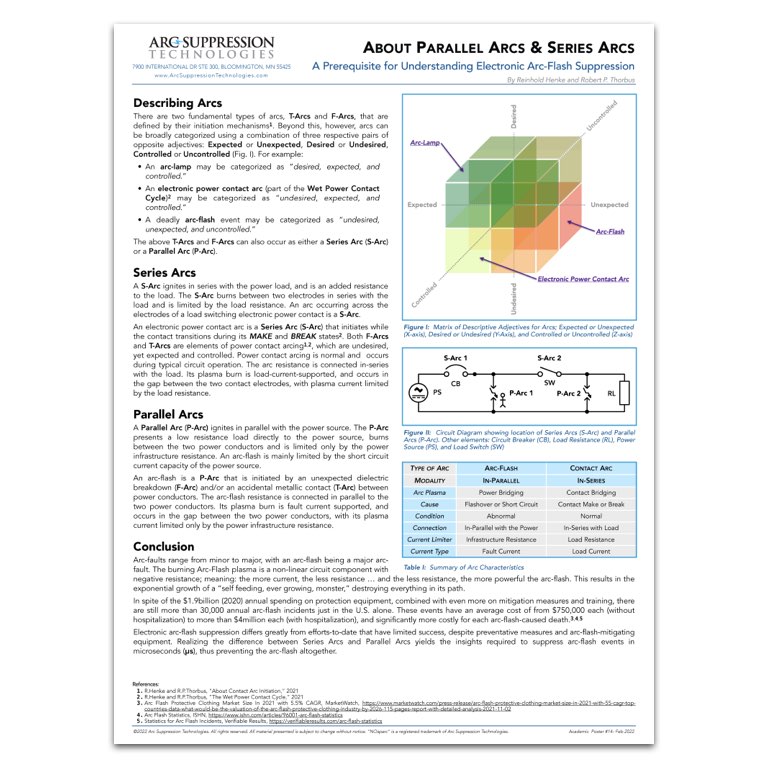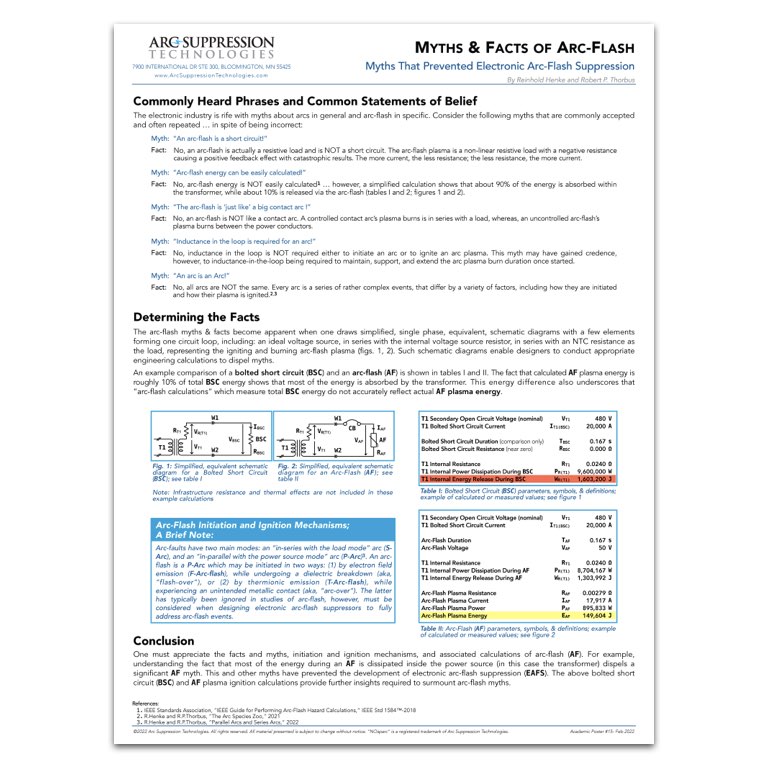Get Smart About The Arc
The following “academic posters” cover key concepts about our path to understand arcing and arc suppression while so many others have not.
(Note: files are poster-sized; use “shrink to fit” settings if printing on letter-sized paper.)
(Click to download)
To date, we’ve found that contact current arcing has not been well understood
(Click to download)
Introducing the Contact Arc Suppression Factor (CASF)
(Click to download)
We now understand that there are only three basic “arc species”
(Click to download)
We believe the “C.C. Bates equations” have been so uncritically accepted because power contact arcing is not well understood
(Click to download)
Can an “arc-suppressing-snubber” be designed?
(Click to download)
The electromechanical industry is rife with myths about contact arcing and electronic power contact arc suppression
(Click to download)
The Dry Power Contact Cycle (Dry PCC) establishes the mechanical end-of-life projection, or benchmark, of a power relay or contactor
(Click to download)
The Wet Power Contact Cycle (Wet PCC) determines the electrical end-of-life projection of a power relay or contactor
(Click to download)
The EPCAS Cycle defines the “best-case” scenario of electromechanical switch end-of-life expectancy
(Click to download)
The heretofore mythical “cleaning arc” can now be identified as the “short arc” … or more accurately, the T-Arclet
(Click to download)
The Domains of Existence for Thermionic-Emission-Initiated Arcs (T-Arcs) and Electron Field-Emission-Initiated-Arcs (F-Arcs)
(Click to download)
Wet/Dry power contact switching utilizes two separately controlled, sequenced contacts in series
(Click to download)
A deadly arc-flash event may be categorized as “undesired,
unexpected, and uncontrolled”
(Click to download)
The electronic industry is rife with myths about arcs in general and arc-flash in specific
(Click to download)


